8 super old school versions of modern gadgets on display at Istorya Vintage Fair
We live in an age where life without mobile phones is almost unthinkable, a time when people say "there's an app for that" as often as you'd hear them say "thank you" or "goodbye".
But have you ever wondered how people do things in the past? Ever wondered how the first telephone looked like? How they made greeting cards in the time that there’s no printer yet? Enter "Istorya ng Pasko".
Organized by Warehouse Eight and The Curious Artisan, “Istorya ng Pasko” is an antique haven where you can discover old forms of modern-day machines long rendered foreign and obsolete.
The second iteration of Istorya vintage fair, the event celebrates curious pieces from the past and the ingenuity of the people who made them.
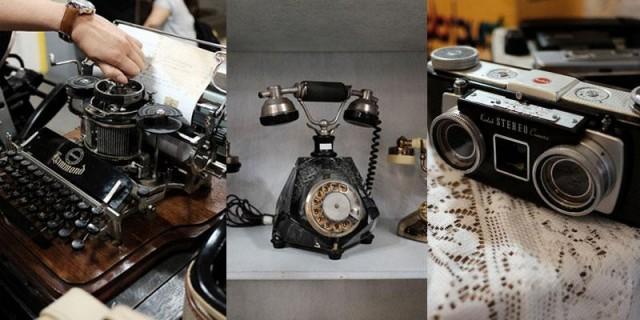
“New inventions leave a sense of awe and wonder. Istorya gives you the same feeling about things made in the past. It’s not about the efficiency of the thing. It’s more the creative part, the process of using old mechanical machines and the stories formed while you use them,” co-organizer Kayla Dionisio shared.
“It’s slow and different. Unlike what we have now, the things here are really inefficient. But the person is more involved and attached in the process, like in doing letterpress printing for example. We exert more effort, and it turns out to be more beautiful because there’s more of us in it. It makes the output more human.”
Here are eight old models of modern technology uncovered at Istorya.
1. Charcoal irons
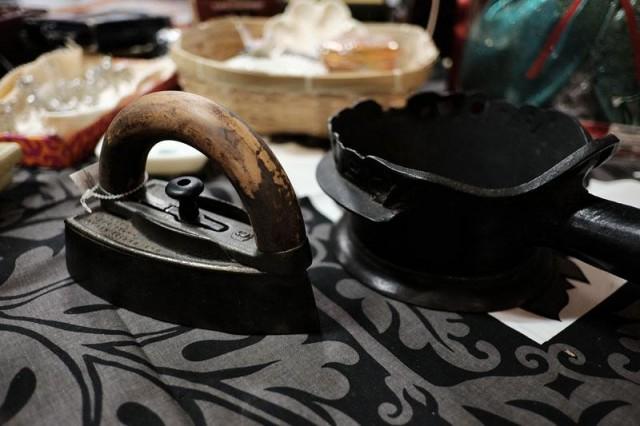
A precursor to the electric steam iron, the charcoal iron uses coals to straighten wrinkles and creases. Burning coals are placed inside it to generate heat and smoothen out different kinds of fabrics. At Istorya, you can find two types: one is an open circular iron, and the other, a three-dimensional triangular shaped iron with a cover and handle, in which the irons of today are based.
2. Mechanical calculator
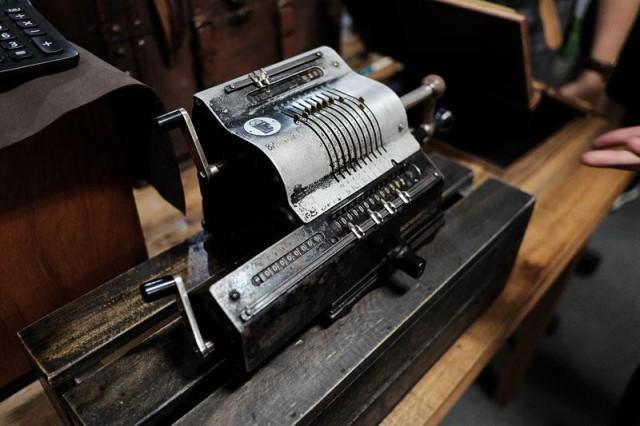
One of the many curiosities of Curious Artisan founder and antique collector Lennie Dionisio, the Brunsviga Nova 13 mechanical calculator is like an abacus, but more advanced; it can add, subtract, multiply and divide.
3. Stereo camera

People from the past also made GIFs. They used stereo cameras to do so. The only stereo camera at Istorya is owned by art and antique collector Mimi Radova. It has two lenses separated by a film frame that serve as an image sensor. This build allows the camera to simulate human binocular vision, enabling it to capture three-dimensional and moving images.
4. Gramophone
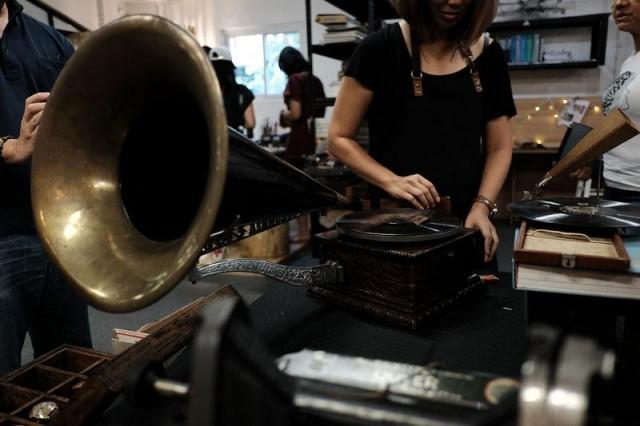
The first device for recording and playing sound, gramophones are dinosaurs for those who live in the age of Spotify and iPod. This 1902 Columbia Model AJ Disc gramophone is made of oak case and only plays once you crank it.
“It takes so much effort to play music on the gramophone. You have to replace each needle for every round. But the quality of sound makes it worth it. Iba talaga,” collector Dionisio said.
5. Letterpress Printer
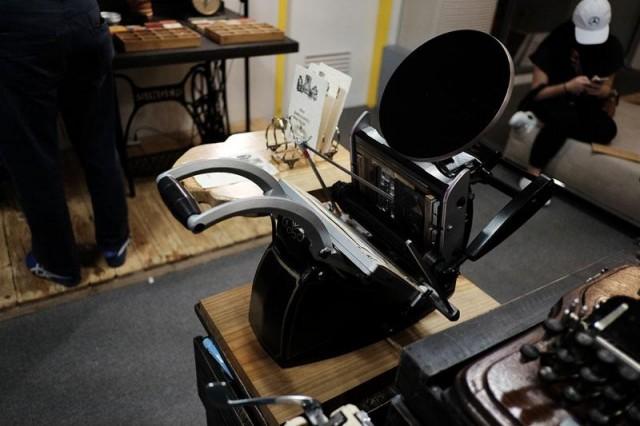
The oldest printing technique, Letterpress is the "father" of today’s modern printers. In this particular Letterpress from London, a surface area with elevated letters is inked and hard-pressed to the top of the paper to recreate words and/or images in reverse.
The final designs on papers are called “impressions” as they leave marks that you can feel with your hands.
To produce these impressions, you have to design individual letters and characters into a “forme” that can either be made of wood or metal plates. The sheet of paper is normally placed over the inked type and slid beneath the press. Pressure or force should be exerted manually to secure the screw for the ink to be transferred from the plates to the paper.
Because of the time and effort required to do a letterpress, it’s considered as an artisan’s craft and thus more expensive. Lennie Dionisio is not selling her Adana letterpress, but is doing demos and giving away handmade postcards for the passionately curious at Istorya from today until tomorrow.
6. Multi-font Typewriter
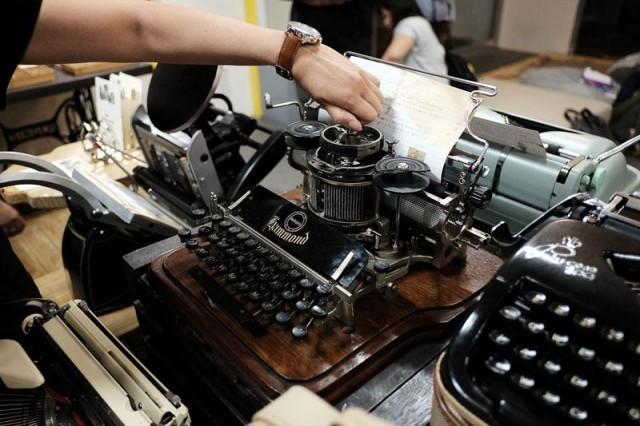
This Hammond typewriter from the '80s allows you to write with multiple fonts. Instead of using type-bars, a curved split type-shuttle with hardened rubber characters rotates into position as the keys are pushed. A spring-loaded hammer swings from behind the carriage to the reverse side of the paper, striking the paper and ribbon against the type-shuttle to print as you press. The type-shuttle is interchangeable, allowing different fonts and language characters to be used in this mechanical printer.
The third typewriter with a keyboard after the Remington and the Caligraph, the Hammond had curved keyboard without the standard QWERTY layout.
7. Brownie (camera)
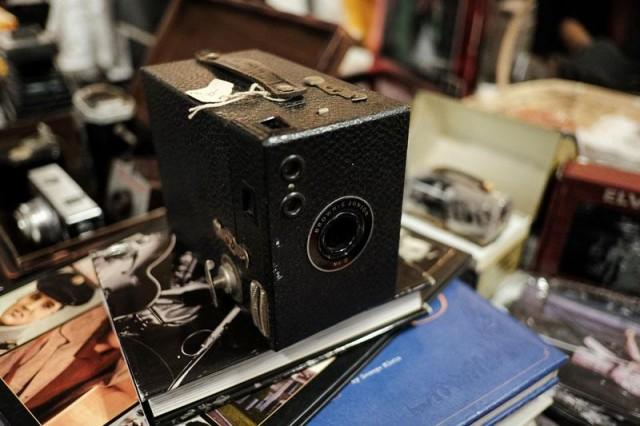
Initially designed by Frank Brownell for Kodak, the Brownie film camera is an attempt to make photography accessible to everyone. Made of cardboard boxes, Brownie is considered one of the most iconic and important cameras ever as it introduced snapshot photography to the mainstream.
“I still like using film because there’s more discipline behind it. When you’re using a digital cam, you take one hundred shots, and just choose the best one to use. But when you’re using film, you can’t waste that much, you make sure that you get it right the first time,” Kamera Club member Kamille Hernandez Donila shared.
8. Telephone
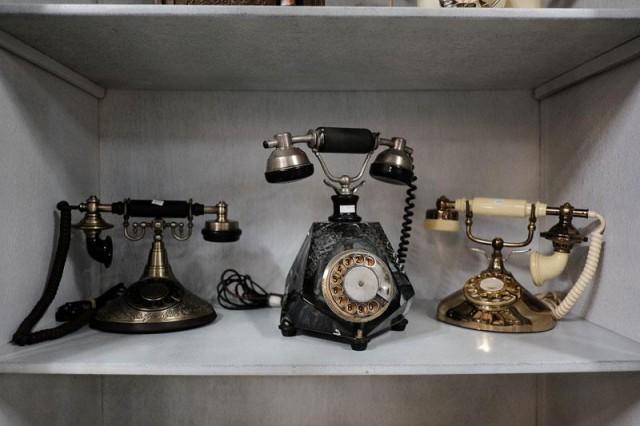
The phones we carry around in our pockets and purses today is nothing like the first set of telephones invented by Alexander Graham Bell. Old telephones were more bulky and extravagant in terms of design. And most of them has only one function: two-way spoken communication. It’s a real-time sound transmission device.
The oldest one on display at Istorya is a 30-year-old apparatus owned by antique collector Susan Wong. She has over thirty Graham Bell telephones that are still functional, which she prefers to use.
“Old technology is less complicated. My children thinks the phones today, like the iPhone are so basic, but for me it’s really complicated,” antique collector Wong admitted. — LA, GMA News
Until tomorrow, December 3. Warehouse Eight is located at La Fuerza Compound, 2241 Don Chino Roces Ave., Warehouse 8-B, Makati. Facebook




